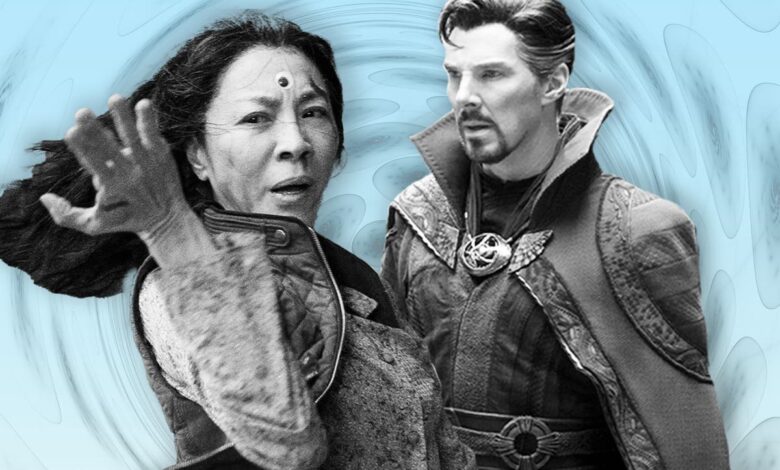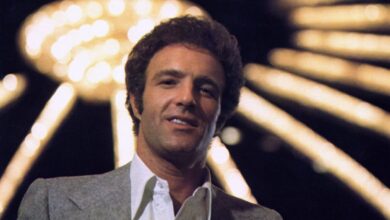Multiverses are modern pop culture’s most tedious fixation

The world is in thrall to the multiverse. The term, used to describe an interconnecting, possibly infinite, mass of parallel universes, has, in the past few years, transcended its nerdy comic book beginnings and entered common parlance for many moviegoers. Go to pretty much any cinema up and down the country this week, and you will be offered one of two multiverse-themed films to indulge in – franchise powerhouse Doctor Strange in the Multiverse of Madness, or scrappy word-of-mouth hit Everything Everywhere All At Once. Last year’s biggest film focused on an interlinking multiverse: Spider-Man: No Way Home. On TV, too, the idea has taken root – in cartoons (Rick and Morty) and live-action sci-fi (Loki).
Of course, it’s an easy fascination to understand. The concept of an infinitely iterating web of parallel universes tugs at something fundamental in the human experience: the bittersweet notion of the road untravelled, the life unlived. It has a grounding in philosophical dialectics and quantum mechanics, but it only catches fire in the whimsy of human imagination. The mind boggles at the possibilities. There’s a universe out there where Kelly Reichardt’s First Cow is the highest-grossing film ever made. A universe where Chet Hanks is elected president of Sudan. Maybe even a universe where Arsenal win the Champions League. Anything’s possible! It’s certainly intriguing to consider the ramifications of these alternative realities, the different paths our lives may have taken had we not ordered a second slice of pie at a cafe four years ago, or stopped to tie our shoelaces instead of running for a bus. A butterfly flaps its wings in 1972, and suddenly we’re all speaking Swahili. But does it make for good fiction? Absolutely not.
An intriguing thought experiment isn’t the same thing as a compelling story premise. The idea of “infinite universes” is, frankly, untranslatable to screen. In some way or another, the concept has to be bastardised, reduced down to a scenario that can furnish a three-act blockbuster, or a six-hour miniseries. We are treated not to an actual multiverse, but a handful of alternative universes with aesthetic differences that can be gleaned and then quickly forgotten as the plots dictate. Doctor Strange is particularly parsimonious with its multiverse, miring its character for the majority of the film in just two alternative universes – one seemingly utopian, one apocalyptic. Not so much a multiverse of madness as a multiverse of restraint and screenplay practicalities. But that wouldn’t really work on a poster.
The multiverse has been explored elsewhere across Marvel’s monolithically popular franchise – Doctor Strange follows on from No Way Home, Loki, What If…? and Avengers: Endgame in tackling the idea (along with the animated Spider-Man: Into the Spider-Verse). It’s hard not to look at it cynically. Marvel’s approach to moviemaking often has the feel of a child’s plastic playset; the multiverse lets them re-skin their existing characters for a second payout. Bringing back Tobey Maguire and Andrew Garfield completely derailed the narrative cohesion of No Way Home for the sake of some cheap nostalgia points – but it’s hard to argue with the billion-dollar results.
Everything Everywhere All At Once is more narratively ambitious than Strange in its take on the topic, but still finds its subject matter too big to properly digest. Again, the multiverse is reduced to a small pool of aesthetically distinct sub-worlds – one that looks like a Wong Kar-Wai film; one where everyone has frankfurters for fingers. It is both too small in its scope and yet somehow too big. The film’s take on the multiverse works best when in comic mode, when parallel universes are selected purely for laugh value.
Although multiverses make for unwieldy dramas, they are in fact ripe for comedy. Irreverent Adult Swim cartoon Rick and Morty manages to mine fathomless reserves of humour from its multiverse, which does, to its credit, take the “infinite” part of the premise and run with it. Compared to the leaden earnestness with which Marvel usually handles its own multiversal lore, there’s something undeniably winning about Rick and Morty’s brash, snarky take on cosmic infinity. It’s not the first TV series to tackle it either. Classic shows from Buffy the Vampire Slayer to Star Trek have explored parallel universes; Futurama’s brief excursion into the multiverse back in 2003 remains one of the series’ high points. The difference here, of course, isn’t just creative, but also financial – Rick and Morty can afford to take risks that Marvel can’t because it doesn’t have billions of pounds hinging on a franchise’s continued popularity.
Despite my carping, Hollywood’s tedious multiverse-mania looks set to continue unabated. There are more Marvel films on the docket. Next year’s The Flash will see Michael Keaton and Ben Affleck cross over into a new multiverse for DC comics, a la Maguire/Garfield. The directors of Everything Everywhere have spoken vaguely but teasingly about the prospect of a sequel; even if it never manifests, the film’s success is sure to spawn a line of imitators. It’s enough to make your head spin. (Call it multivertigo.) Maybe somewhere out there, there’s a universe in which someone’s managed to successfully translate multiverse theory into a cinematic masterpiece. But it sure isn’t this one.





